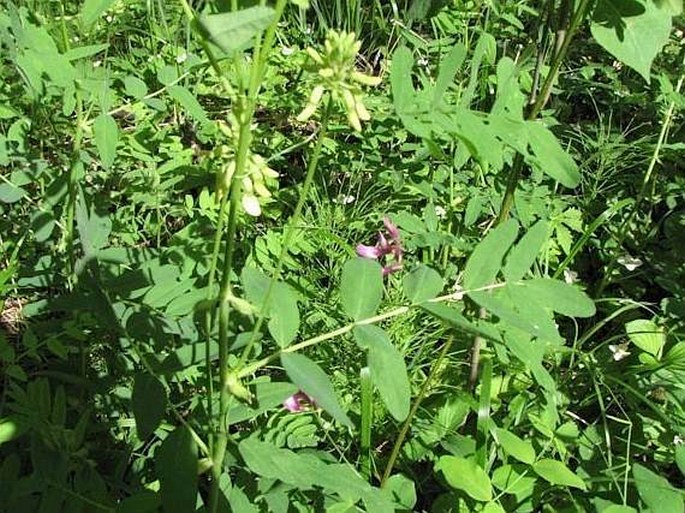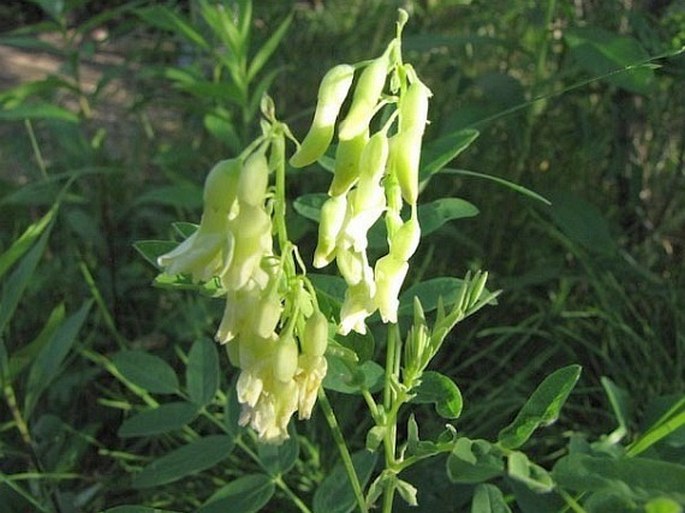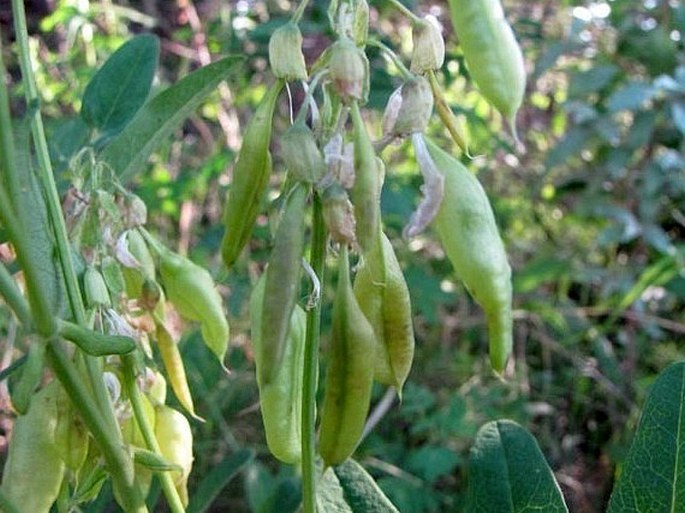Syn.: Astragalus alpinus var. americanus (Hook.) E.Sheld., Astragalus frigidus var. americanus (Hook.) S. Watson, Astragalus frigidus var. gaspensis (J. Rousseau) Fernald, Astragalus gaspensis J. Rousseau, Phaca americana (Hook.) Britton et A. Br., Phaca frigida var. americana Hook.
Family: Fabaceae Lindl.

Distribution: Southeastern Alaska, all Canadian provinces and territories with exception of eastern Maritimes and in US, Montana, western part of South Dakota, Wyoming and Colorado.
Ecology: Moist meadows, flood plains, banks of streams, foothills to montane, in elevations from 800 m to 1600 m. Blooms in July and August.
Description: Perennial herb, 30–100 cm tall, stems hairless, thick at base, from woody root crowns and rhizomes. Leaves alternate, divided into 9–17 ovoid to elliptic leaflets, 2–5 cm long, 7–15 mm wide, stipules 1–3 cm long, bent backwards, not clasping stem. Inflorescence large, loose, axillary, 15–40 flowered racemes, yellowish white pea-like flowers, 10–15 mm long, bent downwards, calyx nearly hairless, bell shaped, keel tip often purplish, banner wide, keel shorter than wings. Fruit is a legume, slender stalked within the calyx, hanging, inflated membranous, usually hairless, 2–3 cm long.



These images were taken in Canada, Alberta, Calgary, Weaselhead (summer 2012).


